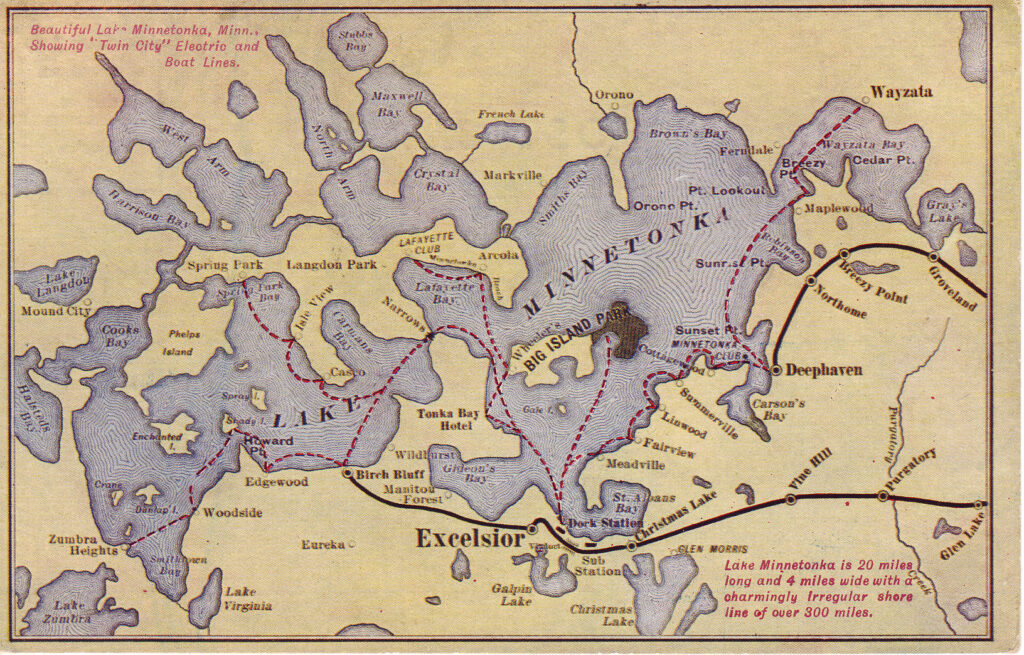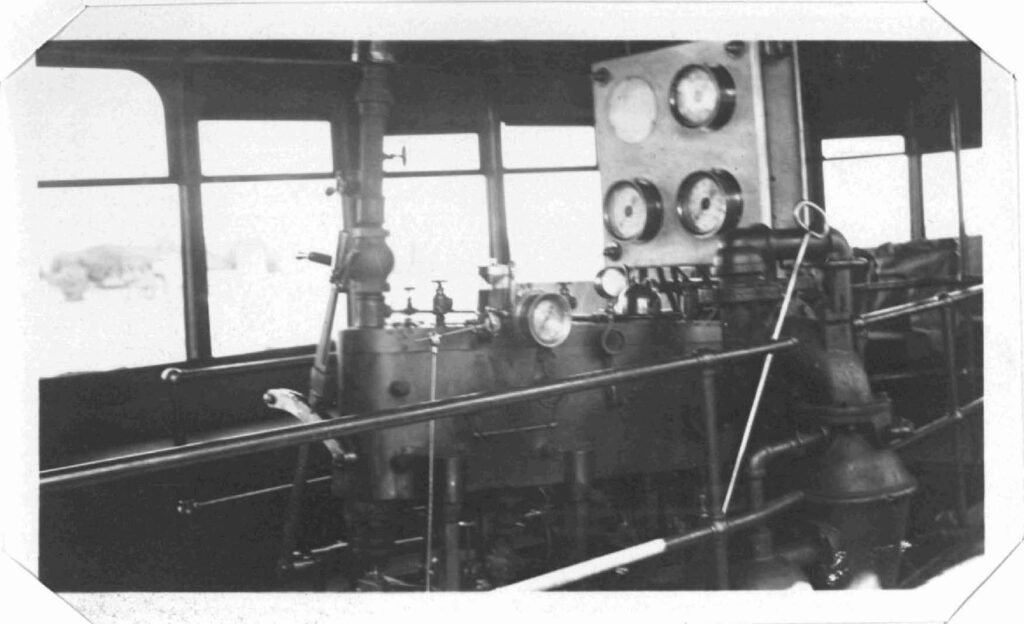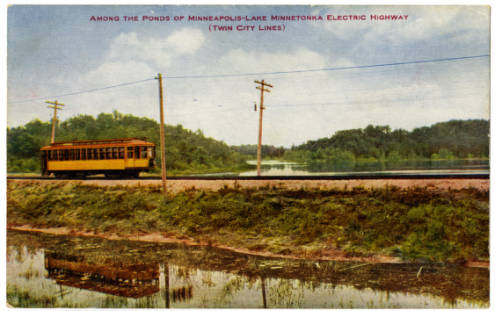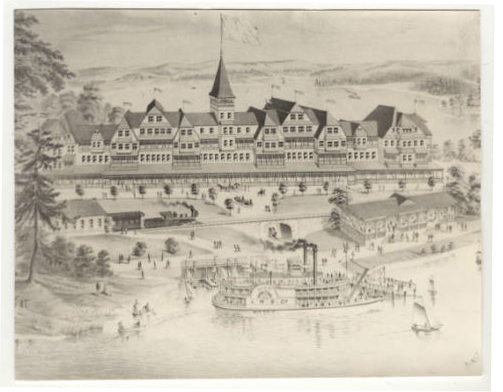By George Kissinger
Twin City Rapid Transit (TCRT) was, if anything, innovative and cutting edge – from developing arguably the most expansive and modern urban street railway system in the United States to developing customer base with seemingly unrelated enterprises such as hotels and amusement parks. To do the later, a fleet of six fast Express Boats had to literally be invented and incorporated into an overall system. Minnehaha was one such Express Boat. (A seventh Express Boat, the Excelsior, was built and put into service in 1915.) Furthermore, multiple crews had to be hired and trained for an essentially 24/7 seasonal operating pace.
Even with all the necessary infrastructure put in place, TCRT had the additional insight not to ignore the human factor. The Express Boats’ schedules were coordinated to meet streetcars arriving and departing at Deephaven, Excelsior, and Wildhurst. These schedules were continually refined for efficiency, the changing needs of customers, and volume of fares.
With noted and somewhat complicated variations, there were essentially three separate time periods that defined the Express Boats’ operation on the lake. From 1906 through 1907, service was started up with all Express Boats initiating their routes from the docks in Excelsior. From 1908 to 1912, after some trial and error, the service was split in two with three boats operating exclusively on the Upper lake out of Wildhurst and three boats operating exclusively on the Lower lake out of Excelsior. In 1913 the Express Boats were given continuous routes serving, via a loop, all stops on both the Upper and Lower Lake. This period lasted through the end of all operation in 1926. At the peak of ridership (approximately 220,000 in 1921), there were twenty-seven separate stops on the loop route. Ridership then began to decline and dropped to around 68,000 by 1924.




